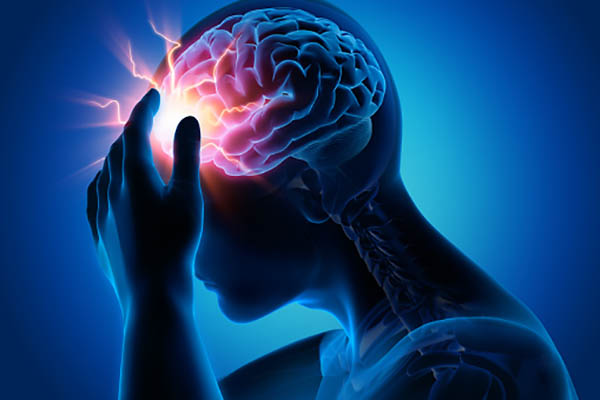

Migraine and Different Types of Head pains
Migraines can be more convoluted than the vast majority understand. Various types can have their own arrangement of side effects, occur for remarkable reasons, and need various medicines.
When you know the sort of cerebral pain you have, you and your primary care physician can find the treatment that is probably going to help and actually attempt to forestall them.

Normal Kinds of Migraines
There are north of 150 kinds of migraines, however the most widely recognized types include
Strain Cerebral pains
Strain cerebral pains are the most widely recognized kind of migraine among grown-ups and youngsters. They cause gentle to direct agony and go back and forth after some time. They generally have no different side effects.
Headache Migraines
Headache migraines are frequently depicted as beating, pulsating torment. They can endure from 4 hours to 3 days and as a rule happen one to four times each month. Alongside the agony, individuals have different side effects, for example, aversion to light, commotion, or scents; queasiness or spewing; loss of hunger; and furious stomach or gut torment. At the point when a youngster has a headache, they might look pale, feel tipsy, and have foggy vision, fever, and an irritated stomach. Few youngsters’ headaches incorporate stomach related side effects, such as retching, that occur about one time per month.
Bunch Cerebral pains
These migraines are the most serious. You could have serious consuming or puncturing torment behind or around one eye. It very well may be pulsating or steady. The aggravation can be terrible to such an extent that a great many people with bunch migraines can’t stand by and will frequently pace during an assault. On the agony, the eyelid hangs, the eye blushes, student gets more modest, or the eye makes tears. The nostril on that side runs or stuffs up.
They’re called bunch migraines since they will more often than not occur in gatherings. You could get them one to three times each day during a group period, which might most recent 2 weeks to 90 days. Every cerebral pain assault endures 15 minutes to 3 hours. They can awaken you from rest. The cerebral pains might vanish totally (your PCP will call this reduction) for months or years, just to return later. Men are three to multiple times bound to get them than ladies.
Constant Day to day Migraines
You have this sort of migraine 15 days or more a month for longer than 90 days. Some are short. Others last over 4 hours. It’s generally one of the four kinds of essential cerebral pain:
Constant headache
Constant strain cerebral pain
New everyday steady migraine
Hemicrania continua
Sinus Cerebral pains
With sinus migraines, you feel a profound and consistent aggravation in your cheekbones, temple, or on the scaffold of your nose. They happen when holes in your mind, called sinuses, get excited. The aggravation typically shows up with other sinus side effects, similar to a runny nose, completion in the ears, fever, and an enlarged face. A genuine sinus cerebral pain results from a sinus disease so the gunk that emerges from your nose will be yellow or green, in contrast to the unmistakable release in group or headache migraines.
Posttraumatic Cerebral pains
Posttraumatic stress cerebral pains generally start 2-3 days after a head injury. You’ll feel:
A dull hurt that deteriorates occasionally
Dizziness
Inconvenience concentrating
Memory issues
Tiring rapidly
Peevishness
Cerebral pains might keep going for a couple of months. In any case, on the off chance that it gets worse inside two or three weeks, call your PCP.
Soultions of all types of pains and momery loss
AG- Line Tablet + Syrup By Hassni Pharma

AG Lin Tab By HP Pharma
The substances you’ve mentioned, including choline, ginseng extract, ginkgo biloba, lavender, and vitamin E, are sometimes associated with potential benefits for memory and brain health. Here’s a brief overview of each substance, including vitamin E:
1. Choline:
– Choline is an essential nutrient that is important for brain health.
– It is a precursor to acetylcholine, a neurotransmitter involved in memory and cognitive function.
– Adequate choline intake from the diet is important, but some individuals may choose to take choline supplements.
2. Ginseng Extract:
– Ginseng is believed to have adaptogenic properties, which may help the body manage stress and improve overall well-being.
– While it may support mental clarity and focus, the evidence for its direct impact on memory is limited.
3. Ginkgo Biloba:
– Ginkgo biloba is often used in herbal remedies and is thought to improve blood circulation, including to the brain.
– Some people use ginkgo biloba supplements to potentially enhance memory and cognitive function, particularly in older adults.
4. Lavender:
– Lavender is known for its calming properties, and the aroma of lavender is used in aromatherapy for relaxation and stress reduction.
– While it may help reduce stress and anxiety, it is not typically associated with memory enhancement.
5. Vitamin E:
– Vitamin E is an antioxidant that plays a role in protecting cells from oxidative damage.
– Some studies have suggested that vitamin E may have a protective effect on cognitive function, particularly in older adults.
It’s important to note that the effectiveness of these supplements and herbs for memory and brain health can vary among individuals. Additionally, the scientific evidence supporting their specific memory-enhancing properties is not always robust, and more research is needed. Before starting any new supplement regimen, it’s advisable to consult with a healthcare professional to ensure safety and appropriateness for your specific needs and health conditions.
Remember that a balanced diet, regular physical activity, adequate sleep, and mental stimulation through activities like reading, puzzles, and learning new skills are also essential components of maintaining good brain health and memory
What is the main cause of migraines?
There are multiple triggers that may lead to a migraine attack. Common examples include a drop in estrogen levels (pre-menstruation), alcohol use, stress, cold weather fronts, and sleep deprivation answered by ucdavis
What are the 4 stages of a migraine?
Migraines, which affect children and teenagers as well as adults, can progress through four stages: prodrome, aura, attack and post-drome. Not everyone who has migraines goes through all stages answered by Mayo Clinic









Comments